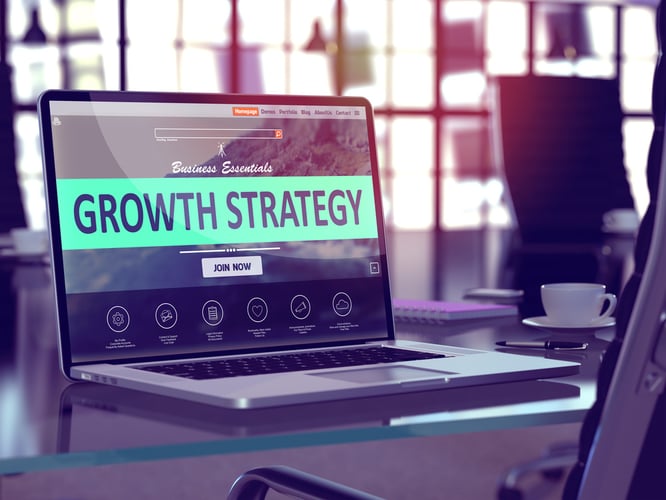Summary
- Retention often gets deprioritised in favour of acquisition, despite ‘net new’ revenue being harder and more expensive to generate
- MDs and CEOs need to lead customer retention from the top down if they want marketing and sales to prioritise it
- The secret to retention is to catch issues early and build resilient relationships with key decision-makers
Every marketer worth their salt knows it’s easier to sell to an existing customer than to win a new one. Five times easier, in fact. So why did our research find that just 36% of businesses have a retention plan in place?
Ignoring customer retention is a huge missed opportunity. We caught up with two of our Marketing Directors from the Southern Counties, Chrissie Durkin and David Fenton, to understand why it’s so important and how to get it right.
Why does retention get overlooked?
A lot of companies make the mistake of thinking that ‘growing the business’ means ‘winning new customers’. But acquisition is the most difficult and expensive growth there is. So why does acquisition usually take precedence over retention?
“It’s actually pretty simple,” David explains. “New customers are more exciting than existing ones. New customers mean commission. They mean hitting targets. Retention doesn’t generate the same buzz.”
Chrissie agrees: “This is often led from the top down. CEOs will often set targets around new customers or new leads. They’ll push the teams to deliver more opportunities or more closed deals. They rarely apply the same pressure around retention or upsells.”
Without clear targets and clear direction from leadership, acquisition almost always takes precedence over retention. So what can you do to fix it?
Establish ‘early warning systems’
Customer retention begins with truly understanding your customer. What's working, what's failing, and what needs to change?
“You want to be totally in tune with your customer,” David says. “The best businesses know what their customers are thinking and feeling."
Net Promoter Score (NPS) surveys and Customer Satisfaction (CSAT) scores are tried-and-tested ways to check in on a regular basis. These tools let you catch minor issues before they become real problems.
“A few years ago, I helped a nationwide business to set up a Net Promoter Score survey that measured feedback for the company and its individual branches,” David recalls. “It then fed that data directly to senior management. This gave senior management the data they needed to make improvements both to individual branches and the business as a whole.”
Chrissie adds that the most successful businesses deploy customer success managers early on in the contract. This helps ensure customers have the continuous support they need and don’t feel abandoned after signing.
“Otherwise, contract renewals can cause real issues because your risk of churn will be much higher,” Chrissie says. “So, your service and communication should be impeccable both throughout the length of the contract and as it winds up. Make customers so happy they won’t even consider leaving or looking around.”
But for some sectors, contract renewals are unavoidable.
For those sectors that require regular tenders, like government contracts, incumbency significantly works in your favour. You know the customer. You know their pains. And you know how they want to solve them.
So, do what you can to get involved in the process and shape the tender in your favour. That way, you’re much more likely to retain that contract when it comes to renewal, Chrissie advises.
David concurs: “Align your value with their needs. If sustainability is their buzzword, flaunt your green credentials.”
Adopt an ABM mindset for customer retention
‘Account-Based Marketing’ is a targeted approach that focuses on a small number of ‘target accounts’. Marketing and sales work together to build relationships with key members of the ‘decision-making unit’ across different departments. By building close relationships across the organisation, you’re better able to build trust and influence their decision.
“Great client handling is always important,” Chrissy explains. “But you also need to know and engage the influencers and decision-makers across the client’s business. Ensure they all know who you are and what you bring to the table.”
“Don’t just buddy up with only a single contact in the customer’s business,” David adds. “Get in with the Sales Director, the procurement head, everyone. Try to be well-known and valued across the board.”
Be more than a supplier
“There are countless suppliers out there,” Chrissie notes. “You need the customer to feel that you’re genuinely irreplaceable.”
One of the best ways to do this is to be proactive. Don’t wait for them to call you. Get your team in the habit of proactively calling members across the organisation to explore how you can help.
“This is another area where you really need to know your customer,” David says. “What are their goals for this year? What are they struggling with? What’s the long-term vision and how you can help with that? All of these insights help you to get on the front foot and add more value. Suppliers wait for you to call. Trusted advisors proactively reach out to find ways to help.”
Hosting events, webinars and roundtables can also cement relationships.
“For one client, we run regular user groups,” Chrissie shares. “Customers love getting together and sharing their learnings and experiences. Events can really help take relationships to the next level and make them less likely to look elsewhere.”
Lead retention from the top down
Customer retention should be a top priority for both marketing and sales, driven by the MD or CEO.
“It has to start at the top,” Chrissie insists. “Leaders need to broadcast and consistently reinforce that retention is a key focus, as well as ensure the right retention plans are in place across the business.”
Measurement is another key part of this. Retention metrics are usually overlooked, but they should be given just as much air time as growth metrics and should feature in your teams’ KPIs.
“Targets drive behaviours, David says. “So make sure you’re setting targets related to customer retention and making people accountable for them.”
Harness your most powerful growth lever
Customer retention is often overlooked, but essential for growth. The solutions are surprisingly simple: establish early warning systems, build relationships far and wide and go out of your way to be as proactive and valuable as possible.
Our team of more than 100 proven Marketing Directors have decades of experience helping UK SMEs boost retention and grow their businesses. Better yet, they can join your team on a flexible part-time basis. So you get the expertise you need, on-demand and at your request.




